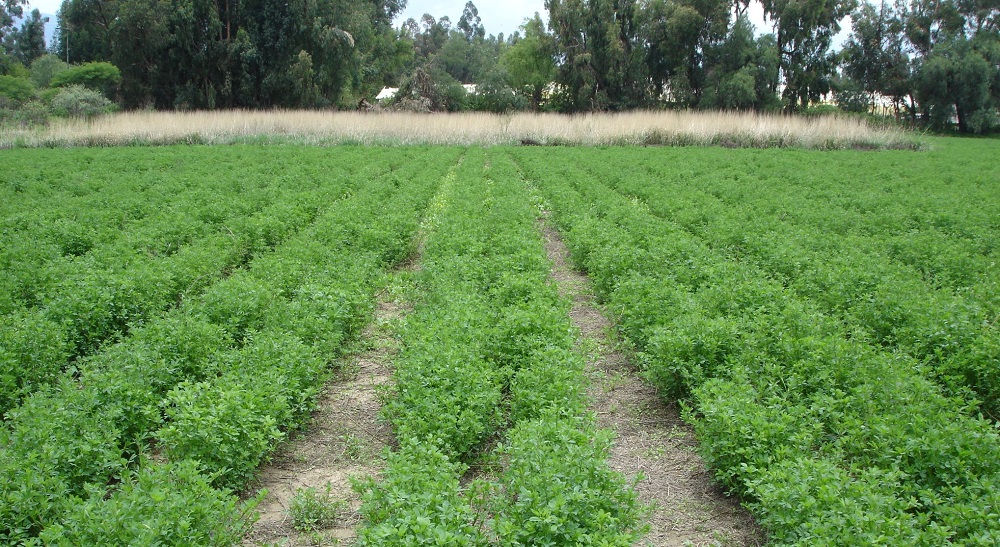Alfalfa (Medicago sativa L.) is one of the most important forage crops in the world. In Bolivia it is cultivated in different parts of the High Andes and in the Interandean Valleys. The species is affected by several fungal diseases which reduce production, but before 2016 hardly any mention had been made of virus disease in the region. The aims of the present work were: 1) to describe the symptomology of this apparent viral disease, and ii) determine its effects on the yield of different alfalfa cultivars available from the CIF-UMSS. In 2016, a plot was established at Tiquipaya (Dept. of Cochabamba) (altitude 2480 m) was planted with 12 alfalfa cultivars. Disease incidence values were estimated and the area under the disease progress curves (AUDPC) calculated. The disease progress curves themselves were analyzed using logit functions for polycyclic diseases, and yields were determined. Disease symptoms included deformation of the folioles, thickened veins, the presence of vein enations and papillae on the abaxial leaves, reduced plant size - all symptoms of infection apparently caused by Alfalfa Dwarf Virus. The different cultivars returned different incidence values. They also returned different apparent infection rates ranging from 0.072/day for Cóndor, to 0.113/day for Tamborada. The different cultivars returned different dry weight yields, with yields inversely related to the AUDPC. In conclusion, based on the foliar symptoms registered, the viral disease is associated with the Alfalfa Dwarf Virus. The twelve cultivars evaluated presented different incidence levels of the viral disease.

